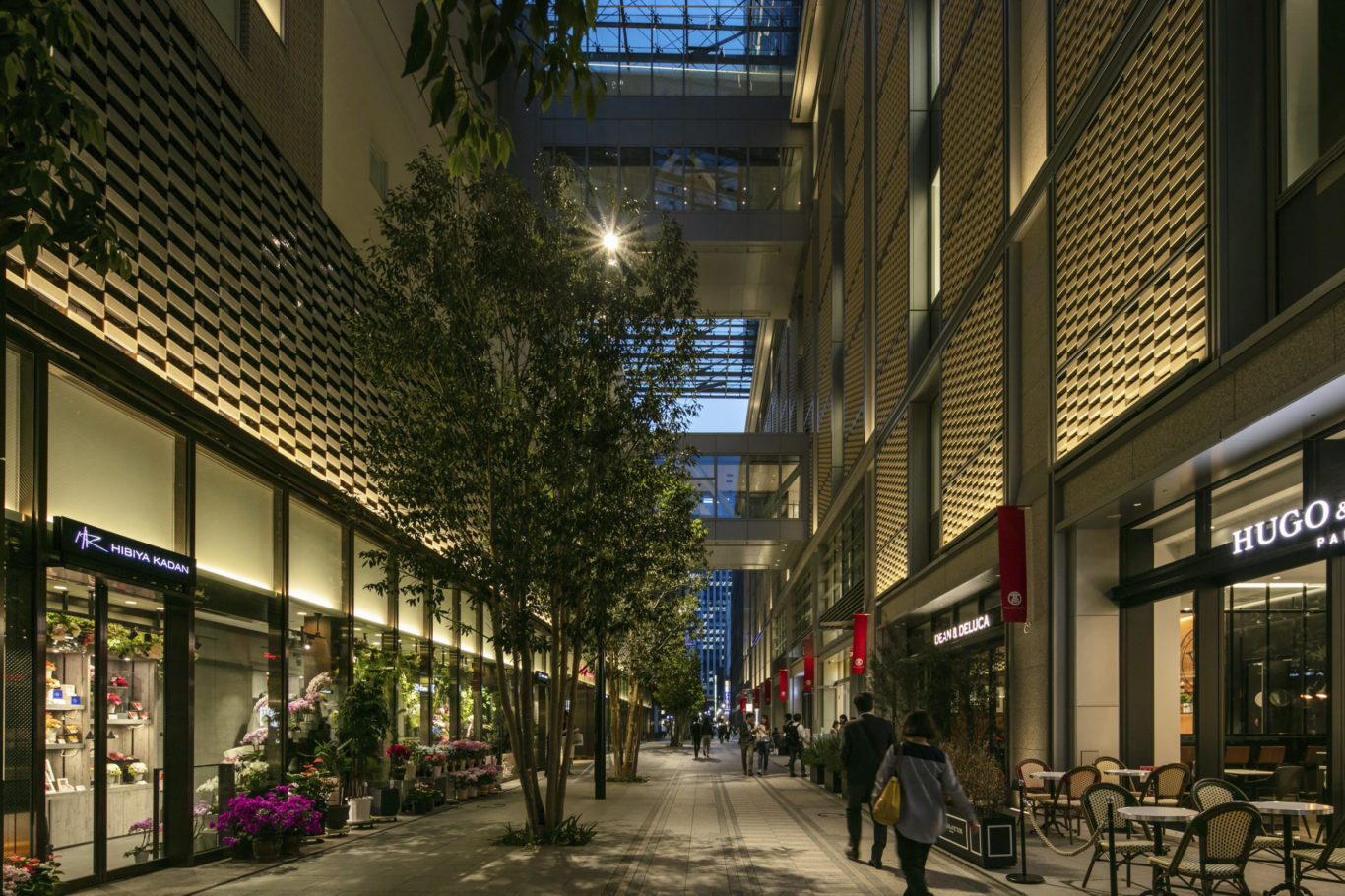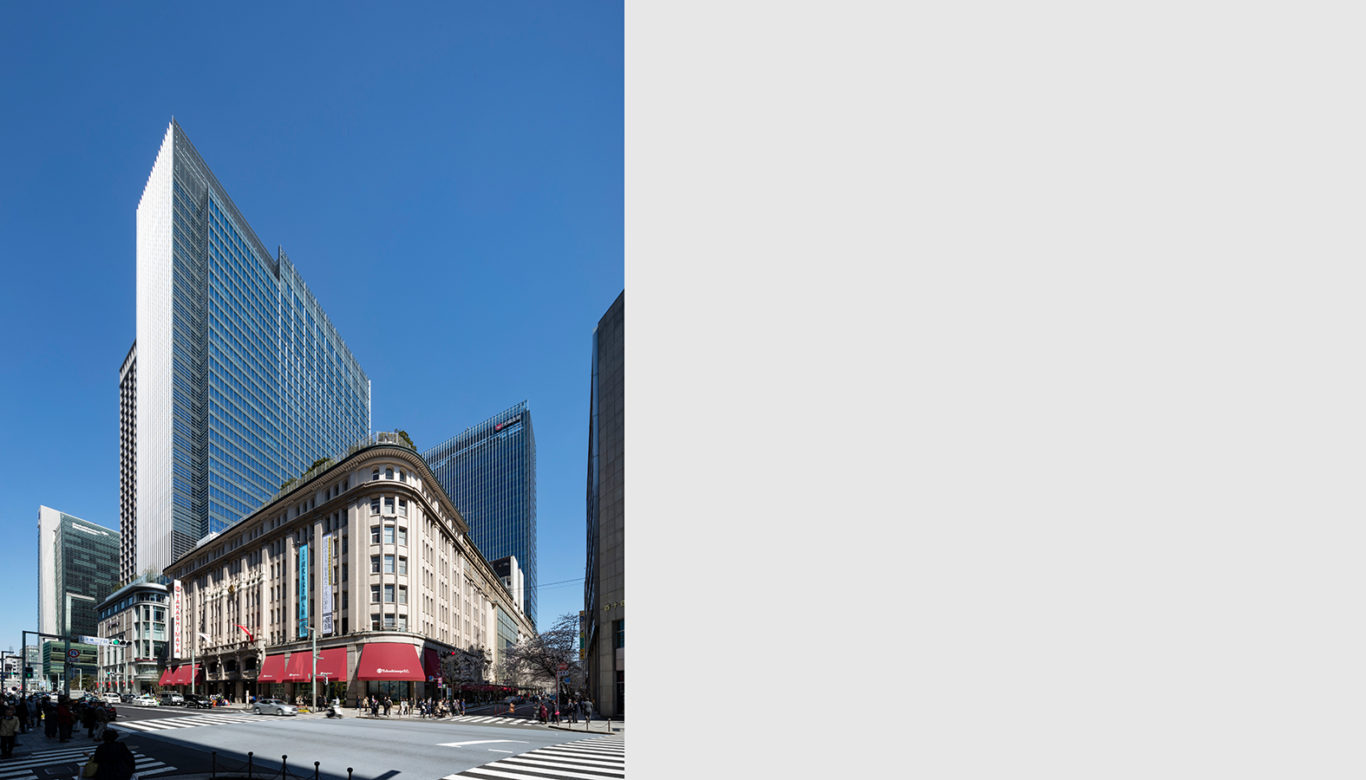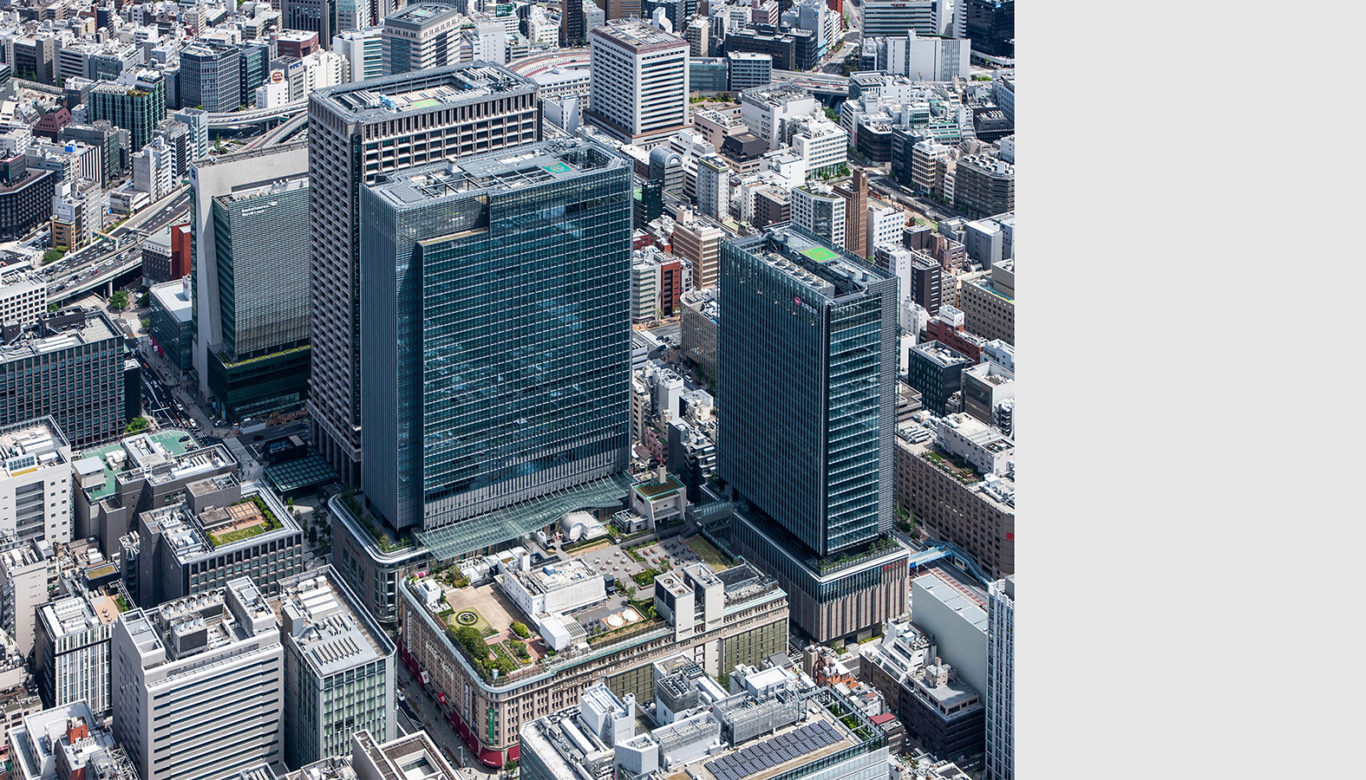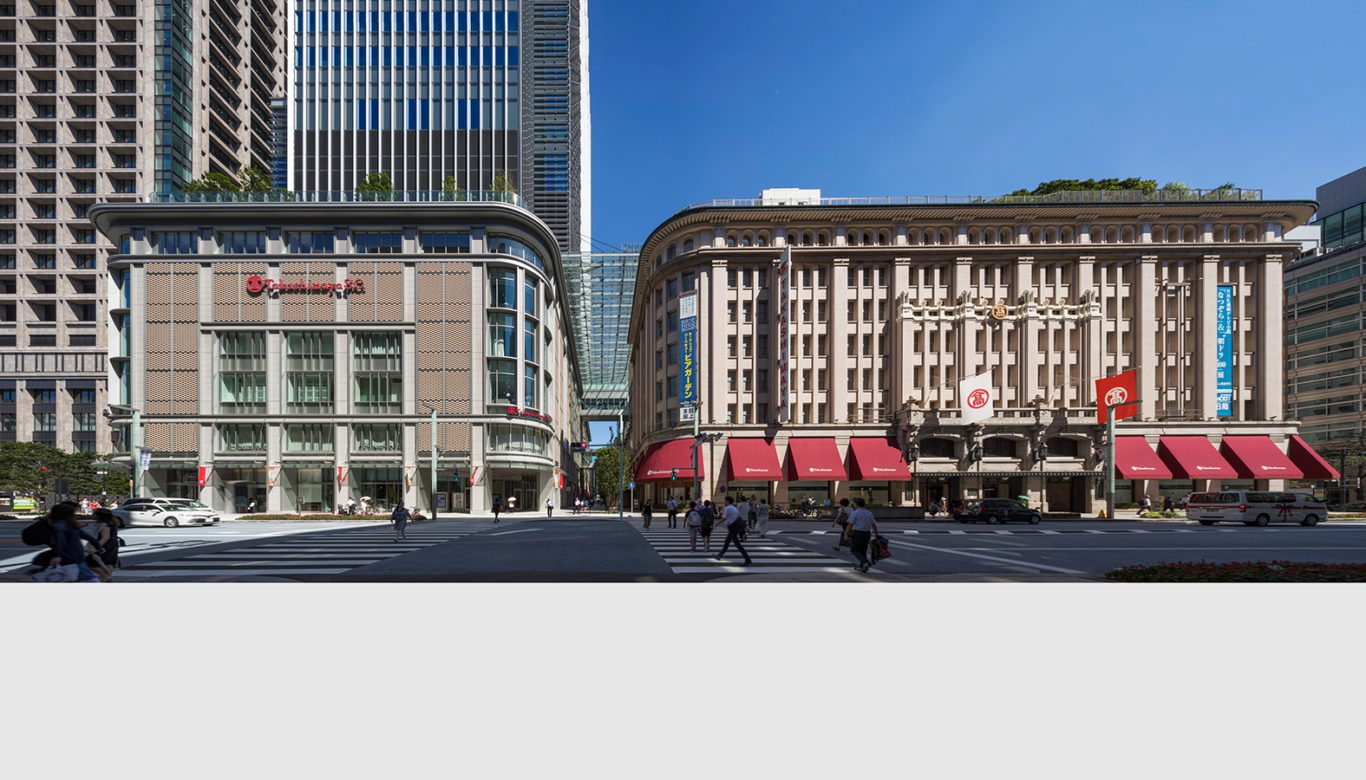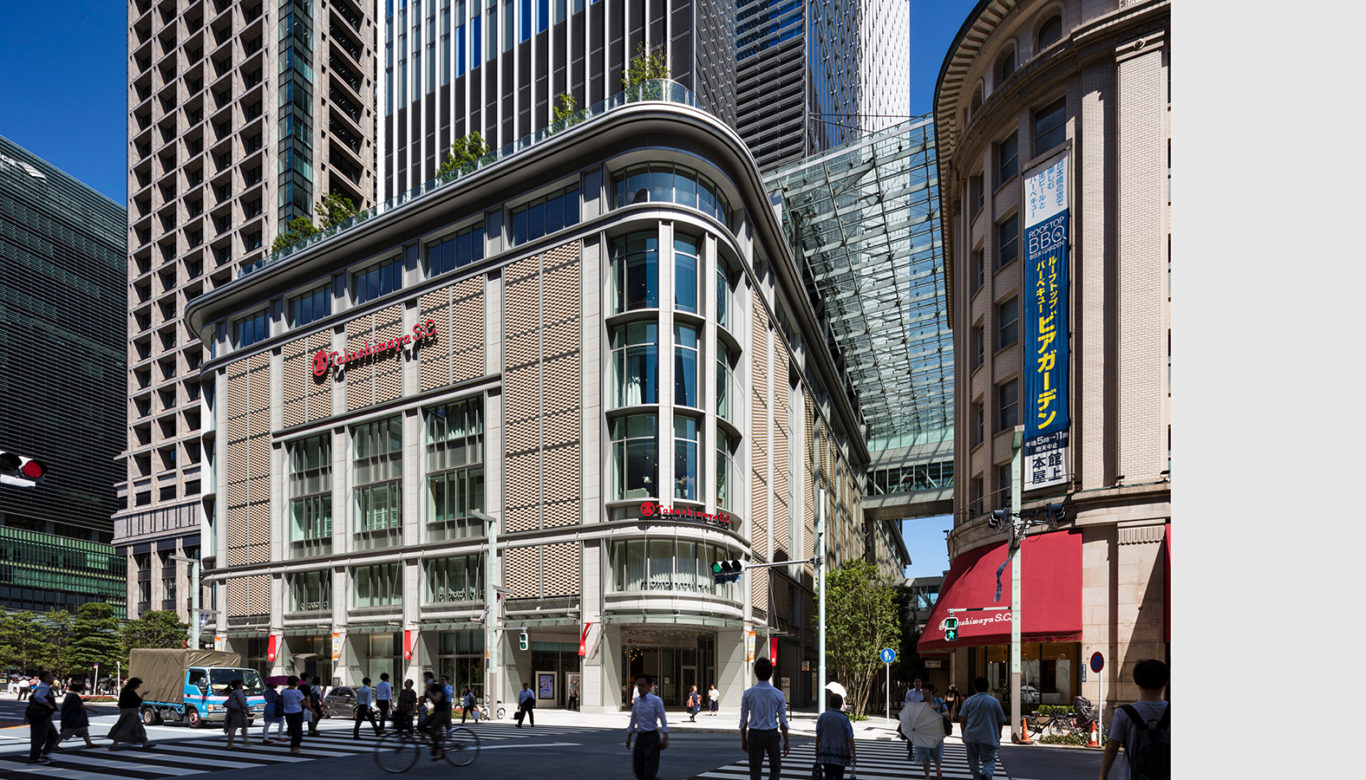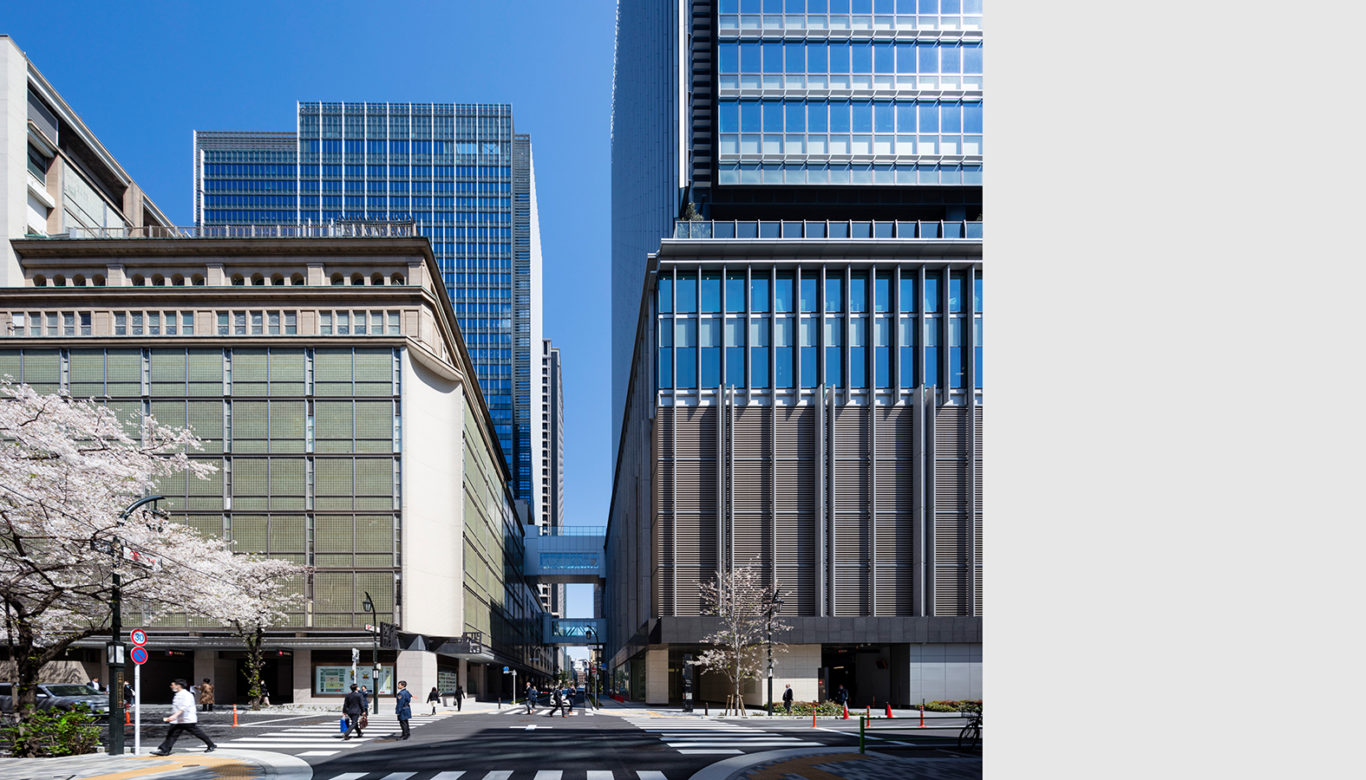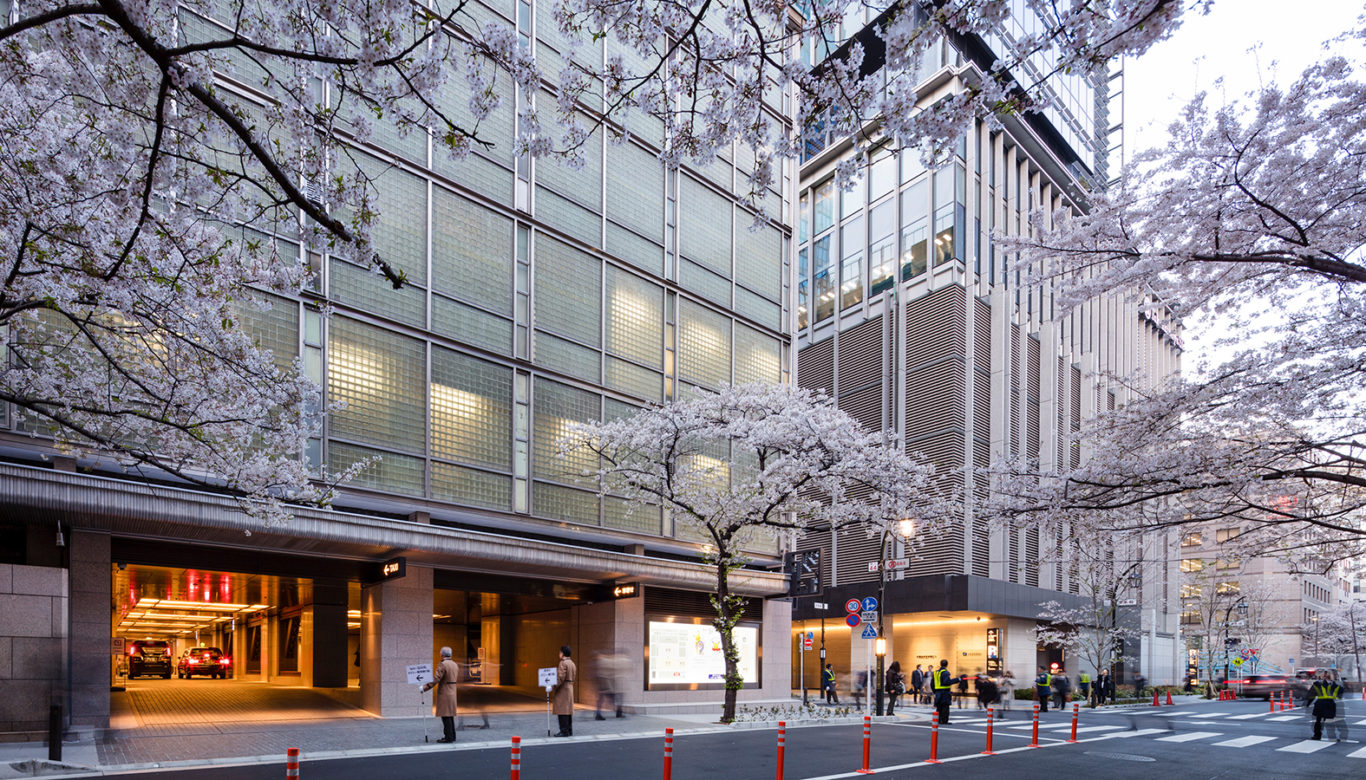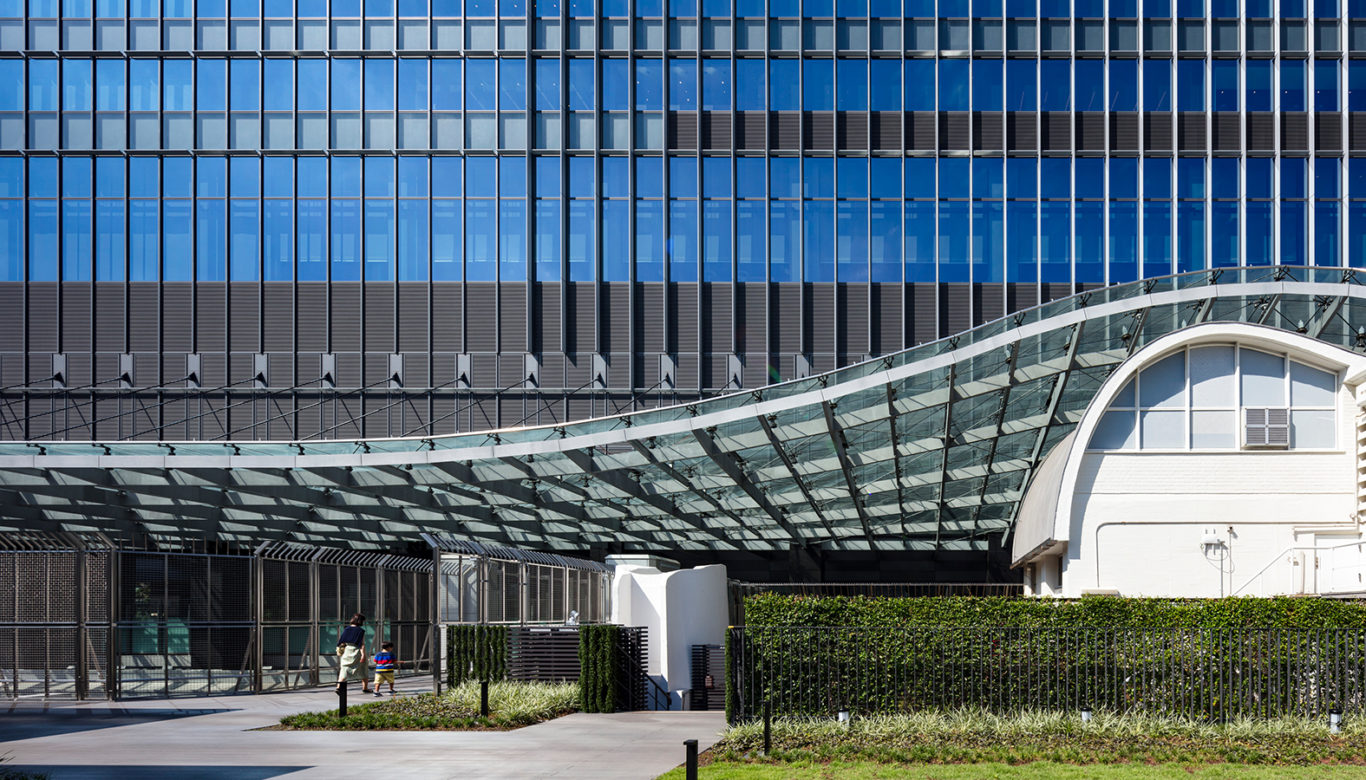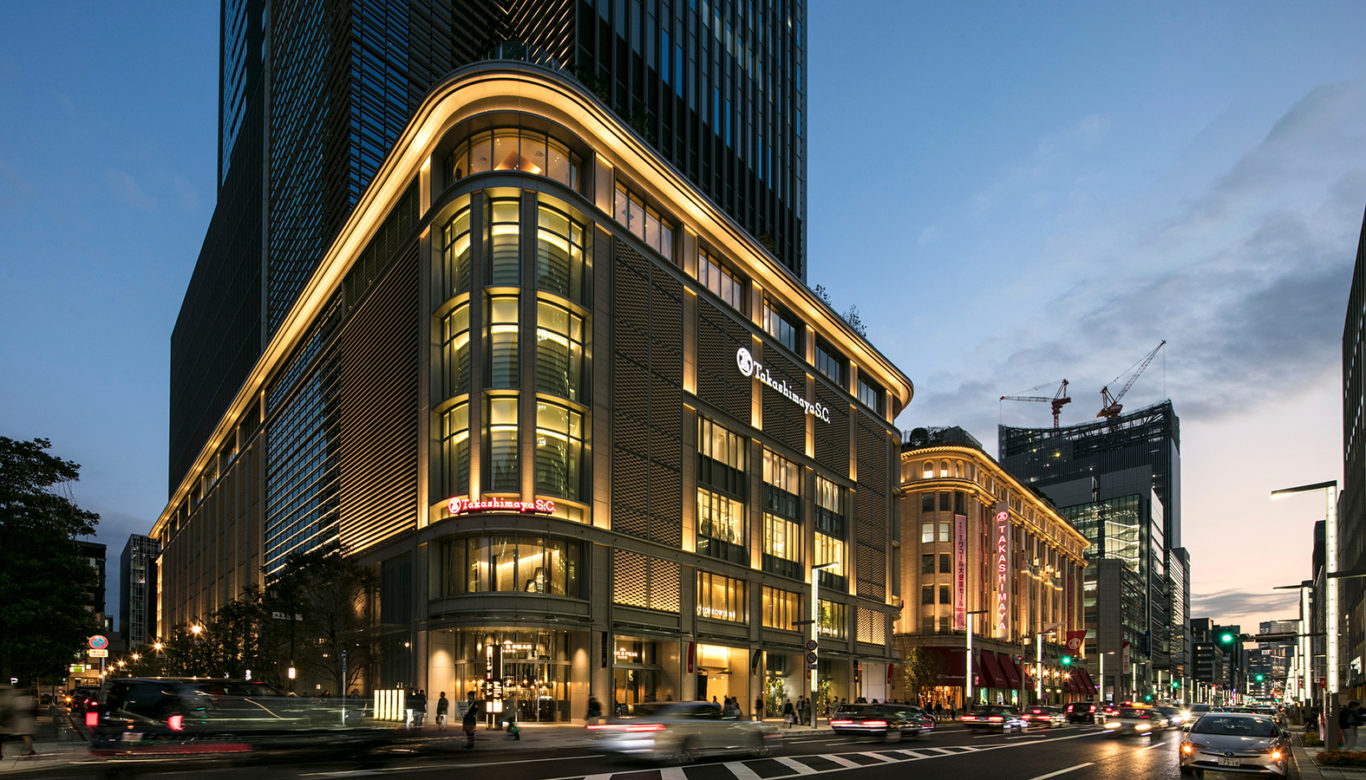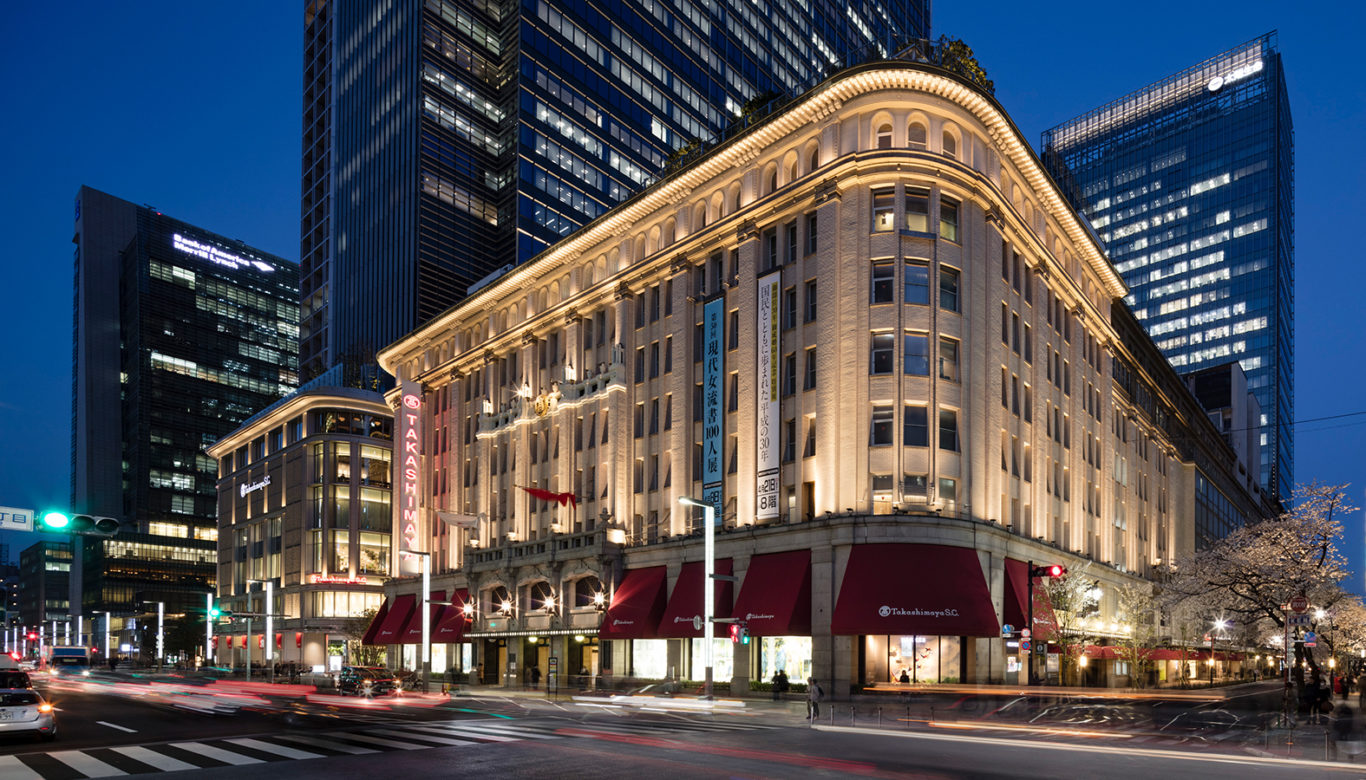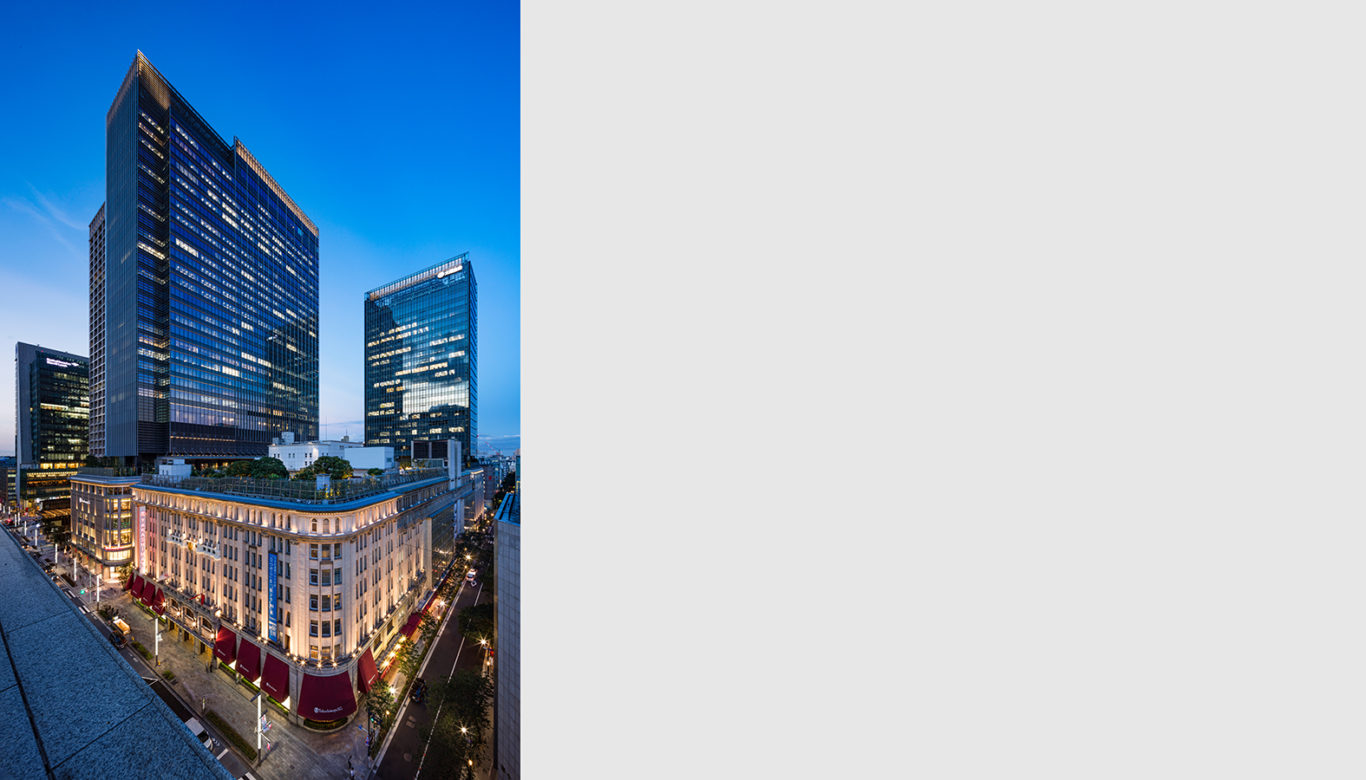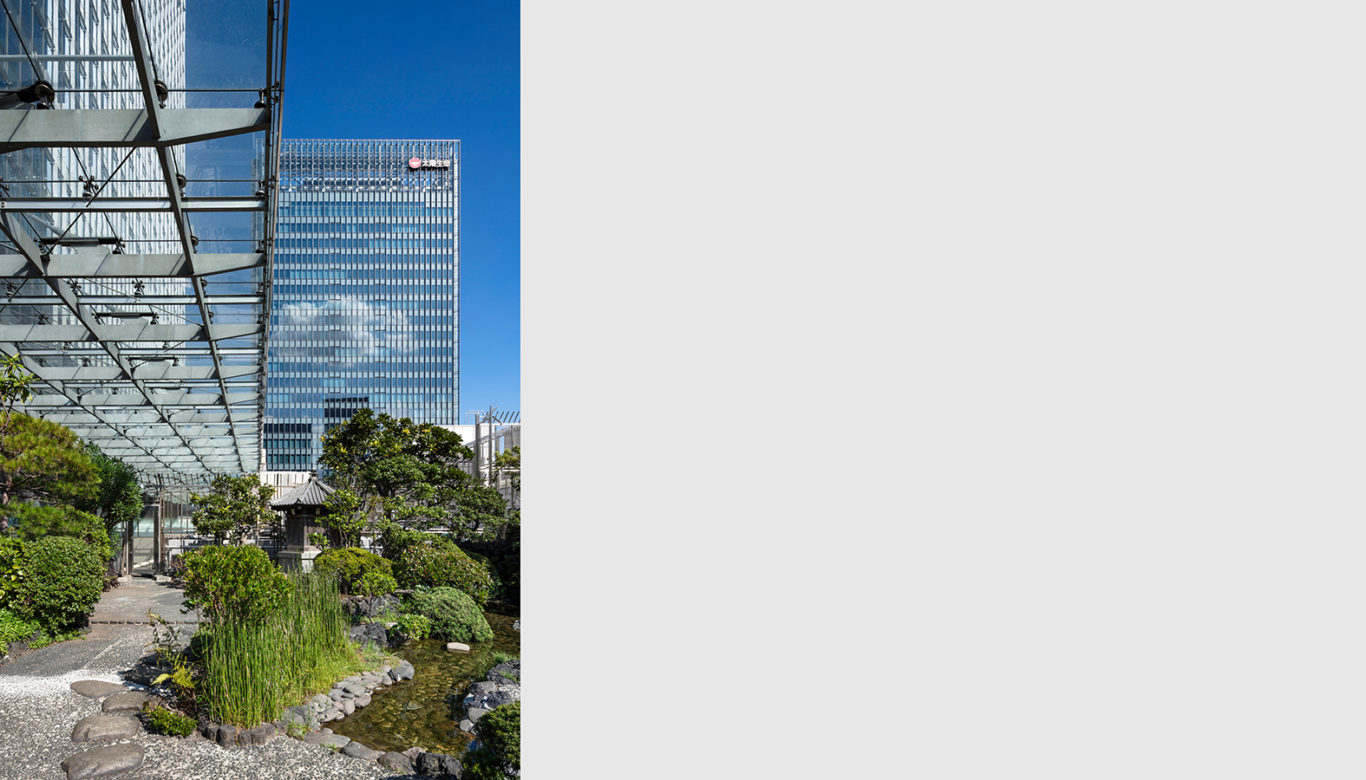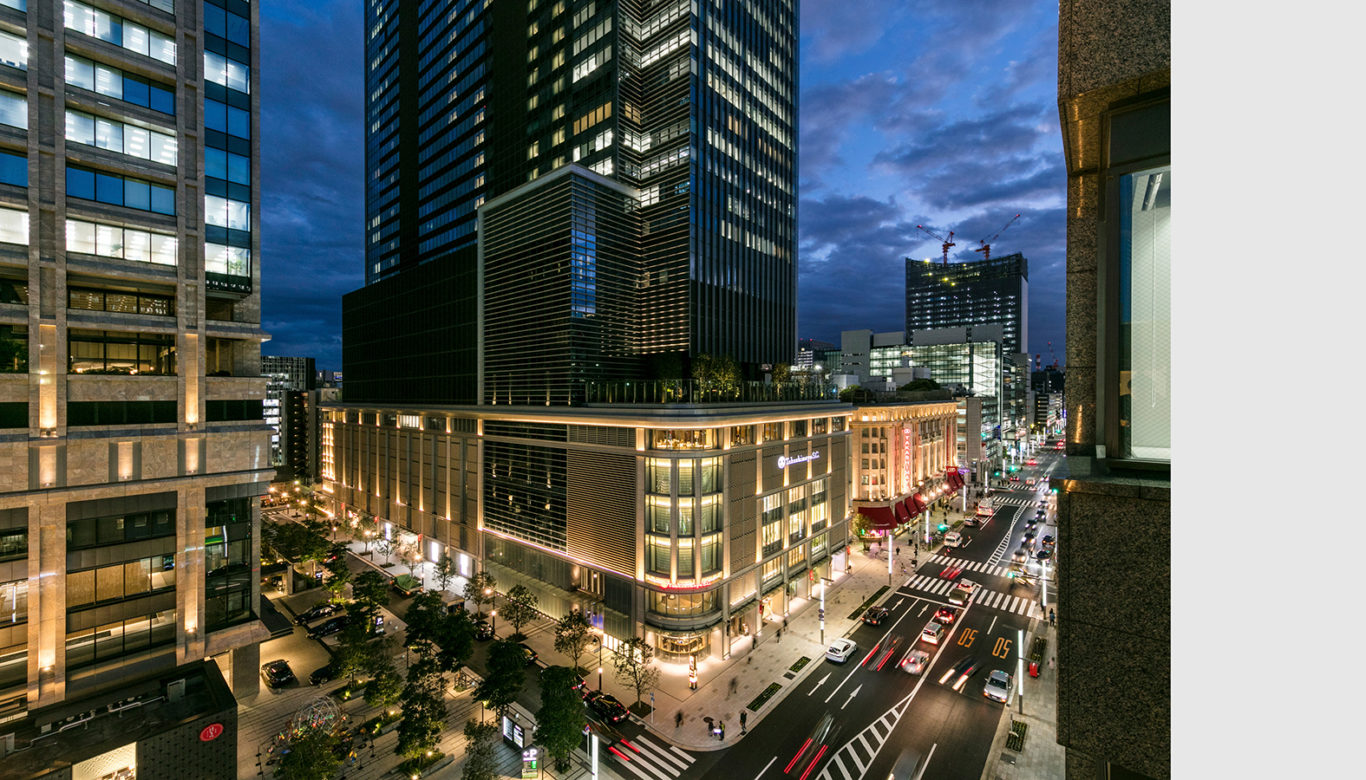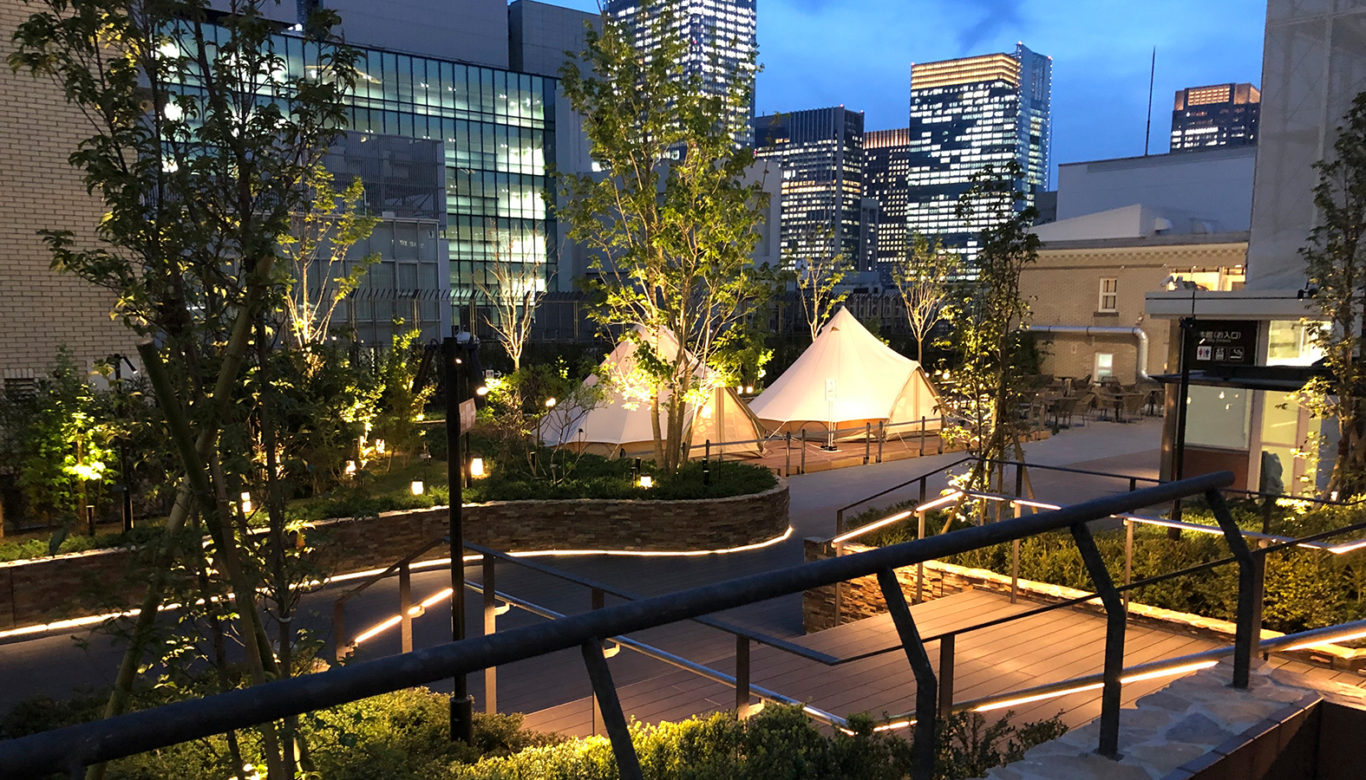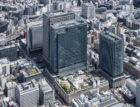The Nihonbashi 2-Chome Development revitalizes Tokyo’s historic, flagship Takashimaya Shopping Center as a pedestrian-oriented, mixed-use destination. Leveraging the surrounding streets, the project transforms an underutilized, multi-block site into an interconnected, three-building complex. It adds public green space where none existed before, densifies the neighborhood in congruence with recent developments, and expands the department store – all while maintaining a portion of the business that existed on the adjacent blocks for centuries.
The 286,000-square-meter project included the restoration of the Takashimaya department store and the design and construction of two new towers, to the north and east. The taller of the two new buildings, at 171 meters, provides office space for leasing, while the shorter tower, at 143 meters, serves entirely as offices for Taiyo Seimei, one of Japan’s largest insurance companies. The new buildings connect directly to the department store via sky bridges and rooftop walkways, and expand the store’s footprint. Shops that previously occupied the blocks now operate out of modern storefronts that largely resemble the scale and aesthetics of Takashimaya.
In between the historic department store and the new buildings, SOM reimagined the existing road as a pedestrianized corridor. This canopied space, called the Galleria, connects two major avenues, knitting the site into Nihonbashi’s larger urban pedestrian network. The walkway is lined with retail and helps maintain the neighborhood’s centuries-old identity as a commercial center.
Several floors above, the Takashimaya rooftop has been transformed into a public park. This space, which once accommodated a petting zoo and later became a rooftop parking lot, now combines with the Galleria and terraces atop the podiums to add more than 9,300 square meters of outdoor public space to the dense neighborhood. The bridges connect the rooftop directly to the office sky lobbies, where glass and steel towers rise to match the aesthetic and scale of Nihonbashi’s newest developments. The towers are oriented to maximize the green space’s exposure to sunlight, and its office spaces inside elevate the site into a hub of activity.
